14,000 people suffer from water damage every day in the US. The insurance industry spends roughly $2.5 billion every year on water damage restoration claims with the average claim running close to $7,000. Needless to say, water damage and water damage restoration is serious business.
Water damage restoration isn’t a single project that you can tackle and then forget about. It’s a multi-step process that can take anywhere from a couple of days to a few weeks.
In this article, we cover the equipment used in a water damage restoration, restoration processes, where to find a good water damage restoration professional, and tips on how to handle specific materials in your mobile home like subfloors and ceilings after they’ve suffered water damage.
Our mobile and manufactured homes are made with cheaper and more porous material than most site-built homes. AND THAT’S OK.
Mobile Homes Have a Lot of Porous Materials
Water is one of the most destructive forces on earth and can create havoc on a mobile home.
You don’t need to suffer a major flood to have significant water damage. A 1/8″ crack in a water supply line can leak over 250 gallons of water in a single day and make a mess of the mobile home subfloor, walls, and cabinetry. (Source)
Our mobile and manufactured homes are made with cheaper and more porous material than most site-built homes. AND THAT’S OK.
Let me repeat that…..Manufactured homes are built with modern materials like OSB, MDF, and particleboard. They are constructed with a lot of glue and staples but have comparable strength and durability as traditional materials and building methods. Technology has given us the ability to build sound homes that a regular working-class family can actually afford and there’s nothing wrong with that.
Manufactured homes cost less than half the price of a site-built home per square foot. The average site-built home in the US costs around $286,000. Manufactured homes average only $70,600 (source: MHI)
You don’t get that kind of affordability by using traditional building methods and materials.
Hiring a Water Damage Restoration Company
Hiring a water damage restoration company is easier if you take advantage of the professional associations of restoration companies that train and certify technicians.
The most notable association is the IICRC or Institute of Inspection Cleaning and Restoration Certification. The IIRC is an ANSI-accredited Standards Developing Organization (IICRC) that sets standards and offers 27 certifications for people in the cleaning and restoration business. They also have a website that will help you find an IIRC certified company in your area here.
Expect to have a lot of scammers and ‘contractors’ knock on your door within hours of a natural disaster. You never know what you’re going to get so be polite and ask for their insurance, their business license, and a list of references that you can call. That should make them leave.
Water Damage Classifications Impact Costs
Service Pro of Kalamazoo states that the average price for a standard water damage restoration in WI is around $3,000. That price can change depending on your water damage and intrusion classifications.
The IIRC’s average cost for just water removal is $2700. Adding cleanup and restoration can cost upwards of $20,000. (Source)
What are Water Damage and Intrusion Classifications?
The IIRC has created a national standard of restoration classifications. They have classified water damage into 3 classes and created 4 classifications for water intrusion.
3 Classes of Water Damage
Category 1 water damage is water that came from a ‘safe’ place such as a water supply line or an ice maker.
Category 2 water damage is often called grey water. It comes from an unsanitary and unsafe source such as a sewer line rupture and septic tanks. It is unsafe and will pose a serious risk to anyone that comes in contact with it.
Category 3 water damage has toxic and damaging bacteria such as a serious sewage leak or flood water. It’s best to have professionals deal with this class of contamination.
4 Classes of Water Intrusion
If you get estimates from restoration companies expect to see these water intrusion classes on their estimate. They will use these classifications when estimating the cost of the job,
Class 1 water intrusion is minimal water and mostly nonporous materials like cement.
Class 2 water intrusion deals with medium porosity that extends drying time and cost,
Class 3 water intrusion involves highly porous material like mobile home gypsum board and MDF. These materials soak up a lot of water and will need extended water extraction and drying time.
Class 4 intrusion is the most difficult water damage restoration. Water trapped behind walls and under floors would be considered a class 4. Expect to rip out and replace a significant amount o material.
Water Damage Restoration Equipment
Having the right equipment for the job is essential, especially if you have suffered serious water damage.

The more water and vapor you can remove from your home the better and modern equipment makes that removal a lot easier and a lot more effective, giving you a better chance of complete bacteria and fungal removal.
Water damage restoration equipment is expensive. Luckily, homeowners can rent almost all the equipment needed for DIY water damage restoration.
Water Extraction System
The first piece of equipment used in water damage restoration is a water extraction system. These machines suck up the water and moves it away from the house via tubing.
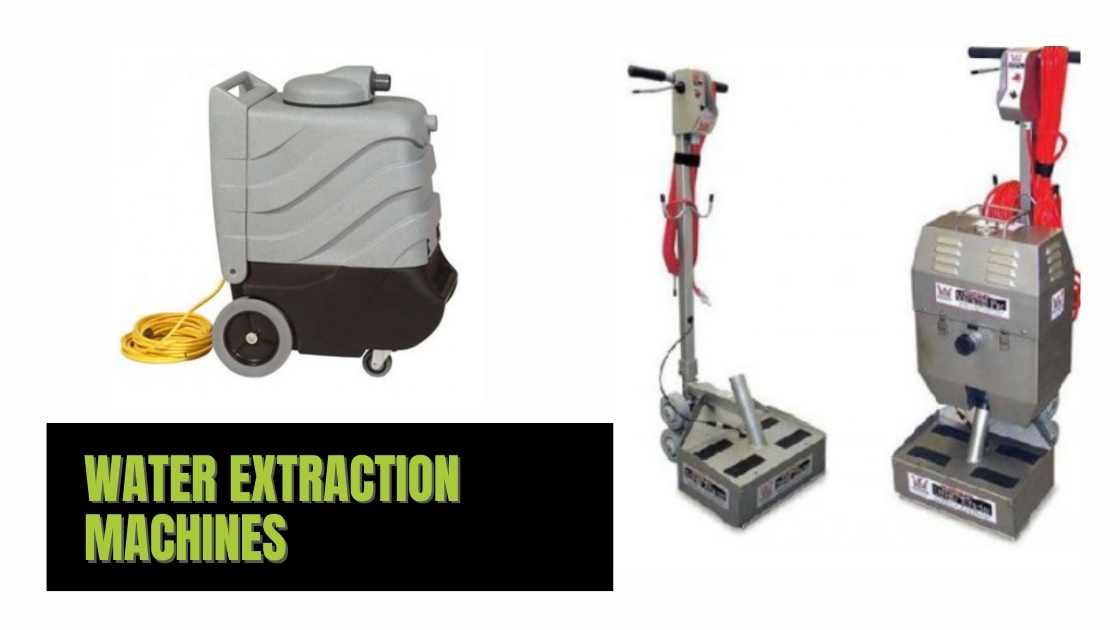
There are several types of water extraction machines. The standing water extraction system on the right is the top of the line Hydro-X Xtreme Xtractor. It has a patented suction roller that does both suction and compression. This forces the water to the surface, so the suction pulls the water away, and it doesn’t have a chance of being reabsorbed by the carpet. It runs close to $4200.
A truck mounted water extraction system are run between &10,000 to $20,000 or more.
Air Movers
You’ve probably seen industrial floor fans pointed toward the floor somewhere. They call them air movers. High-powered industrial air movers push out a lot of air and usually costs between $200-1200 depending on the model.
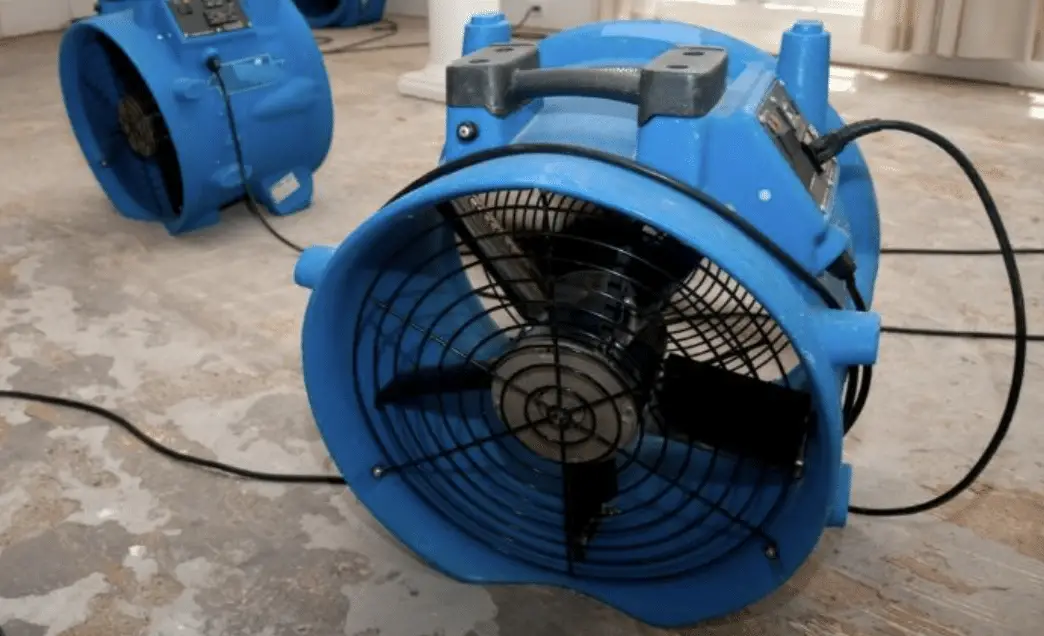
The Injectidry System
The most expensive water restoration air mover is probably the the injectidry systems that has tubing and pads that lay straight over the floor. They run a few thousand dollars but they can dry several feet of flooring or ceiling quickly.
Dehumidifiers
Dehumidifiers pulls humidity, or water vapor, from the air. After a major water incident there will be a lot of humidity in the air and mold spores love humidity.
There are several types of dehumidifiers.
We use a desiccant dehumidification moisture control procedure, along with fans and targeted air movement, to remove moisture in the air from the disturbed spaces. These dehumidifiers direct extremely dry air into damaged areas and speedy drying decrease the probability of additional damage, helping you return to your home or business as soon as feasible.
BMScat
CleanFax.com describes a desiccant dehumidifier as a machine that utilizes “chemical attraction instead of condensation to remove water from the air.”
If you can rent or borrow the air movers and dehumidifiers described above you will have a much easier time. Of course, if you can’t get the equipment make do with what you have and get creative. Simple house fans are better than nothing.
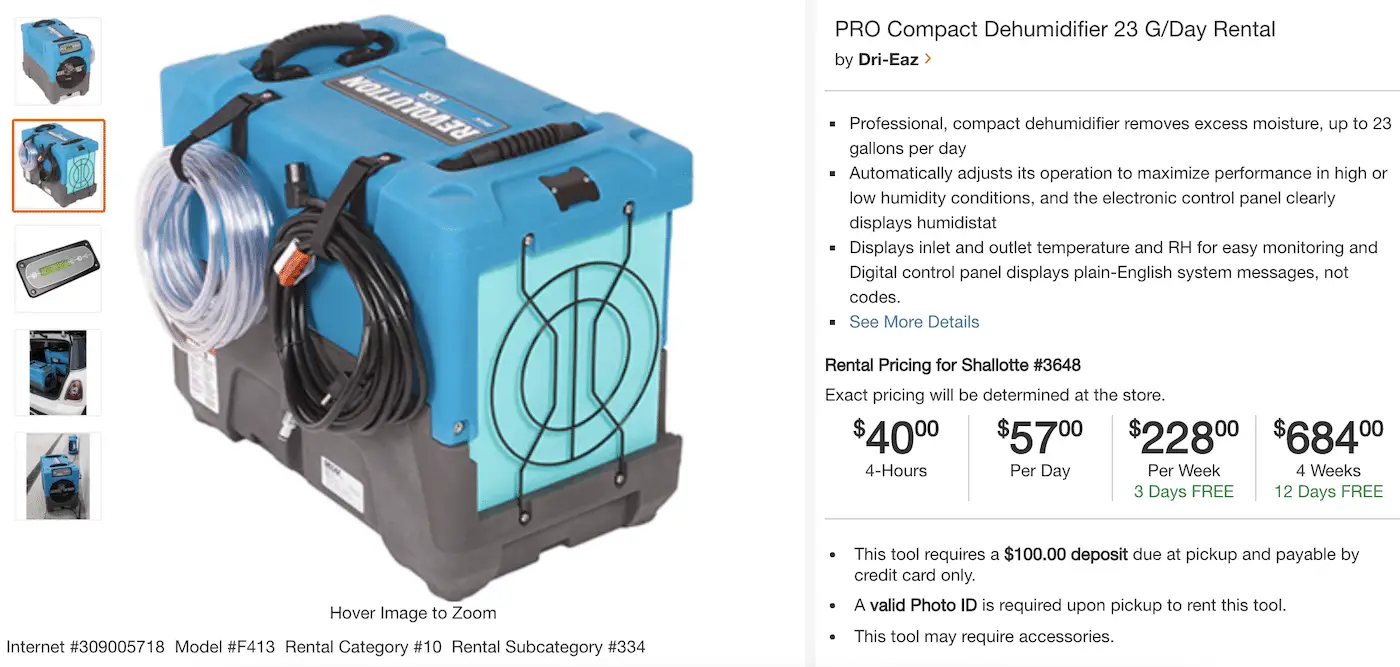
Home Depot and Lowe’s have water damage restoration equipment rentals. The dehumidifier above costs $57 per day or $228 per week. This model can extract up to 23 gallons of water a day.
Air Scrubbers
The name says it all. Air scrubbers pull airborne particles that create the musty smells after water damage. There are wet air scrubbers and dry. The wet air scrubbers use a wet filter that the particles stick to. The dry air scrubber uses an ionic purifier.
A moisture meter is a must-have for restoration companies. The one pictured above costs around $300. It can sense moisture in 150 different species of wood.
Air Purifiers also help indoor air quality. HEPA (High-Efficiency Particulate Air) Filtration is the most popular type of air purifier. This guide will help you understand more about air purifiers.
Self-Mitigation: DIY Water Damage Restoration
You will need to get to work as soon as possible after a natural disaster. Time is of the essence; extract or remove as much water and water vapor from your home as quickly as possible.
Consumer Reports interviewed Joan W. Bennett, a fungal geneticist, that says mold will start growing in dark damp places within 24 hours. Within two days you can actually see the visible colonies of mold with the right conditions.
You’re on your own if insurance won’t cover the water damage and you don’t have the money to hire an expensive water damage restoration company.
DIY water damage restorations are tough because there are so many steps you have to do and equipment for just about every stage.
Water Damaged Subfloor and Flooring in Mobile Homes
The most notable porous material in a mobile home is the OSB, MDF, and particleboard subfloors.
An OSB, MDF, or particleboard subfloors are perfectly fine in every way except they don’t handle water very well. These modern materials are pressed, layered, and glued but the process leaves cracks and crevices that water easily flows into.
Water Damaged Walls and Ceilings in Mobile Homes
Ceiling panels in mobile homes are typically made out of long gypsum board. These are hard to find and the chances of you finding an exact match replacement panel are slim. You may be able to paint your mobile home ceiling stains after the water has completely dried.
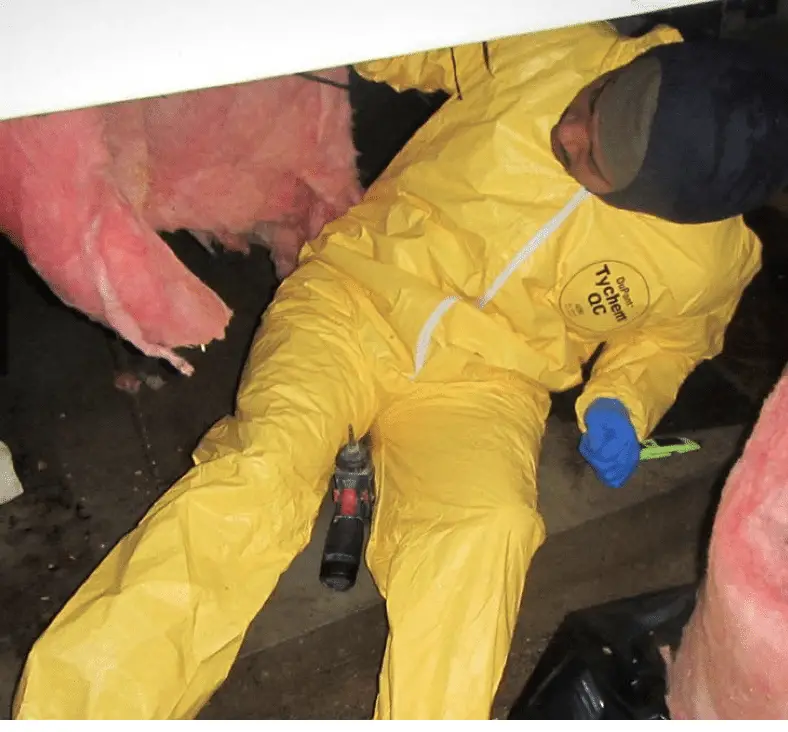
Water Damaged Insulation
Insulation that has been waterlogged probably needs to be replaced. If you can dry it out quickly and completely you may stand a chance of keeping it but it will probably lose its R-value or effectiveness.
Drying insulation out typically requires you to remove whatever surface is in front of it, like the subfloors and wall paneling.
If you do manage to dry insulation out you still run the chance of mold spores spreading and causing chaos in the future. Insulation is a fairly affordable material considering what it can do for a home. A $30 roll of R 19 insulation and a staple gun today could keep mold, illness, and more structural damage from happening in the future.
Most Important Steps in Water Damage Restoration for Mobile Homes
If you plan on hiring a company you’ll need to act quickly. Restoration companies that only handle disaster and fire/ water damage restorations know what they’re doing. It makes sense that we follow their lead. Service Master of Kalamazoo lists their steps for a full-service water restoration:
Water Extraction is One of the Most Important Steps
Do whatever it takes to remove as much water as quickly as possible.
Time is of the essence here. Use a wet/dry vacuum, mops, water extraction machines, rags, or whatever else you have at your disposal to get all the standing water gone.
Drying the Materials
After the water is removed you’ll need to focus on drying the materials out completely. This is usually done with large powerful air movers. If you can, rent the air movers with the special flow attachment that points the air flow toward the carpet.
Aer Industries has an article that gives a rundown of the steps that needs to be taken after a water heater leaked in an older residential apartment complex:
- Surface water is eliminated by mopping or sponging.
- Ventilation is added by opening doors or windows.
- Air movers are brought in to begin drying operations. For a 1,000-square-foot shop, two Soleaire ½ horsepower models like the Max Storm would be needed to surface dry the area quickly.
- Once standing water is eliminated, long-term drying of isolated spaces, such as in wall cavities and under shelving units, begins.
- A dehumidifier would greatly assist in the restoration time frame. Because this is a moderately damp area now, only a small dehumidifier with a 14-pint-per-day capacity would be necessary. The BlueDri BD-76P, for example, should be sufficient to handle the job.
Flood Insurance
It wouldn’t be right to have an article about water damage restoration and not mention flood insurance. A standard homeowner’s insurance policy does not cover flooding.
The only way you can get flood insurance is through FEMA’S National Flood Insurance Program.
The National Flood Insurance Program (NFIP) is managed by FEMA, the Federal Emergency Management Agency. The NFIP is a network of 60 insurance companies that are certified to sell flood insurance across the nation.
Conclusion: Water Damage Restoration is Tough and Expensive
Water damage is serious business. There are many variables at play that affect both the outcome and the cost of a water damage restoration.
The secret to the most successful restorations seems to hinge on the time it takes you to start the restoration after the damage occurs. The sooner you start the removal or extraction of the water and the water vapors from your home the better.
As always, thank you for reading Mobile Home Living®!
Featured Image Source: My Record Journal
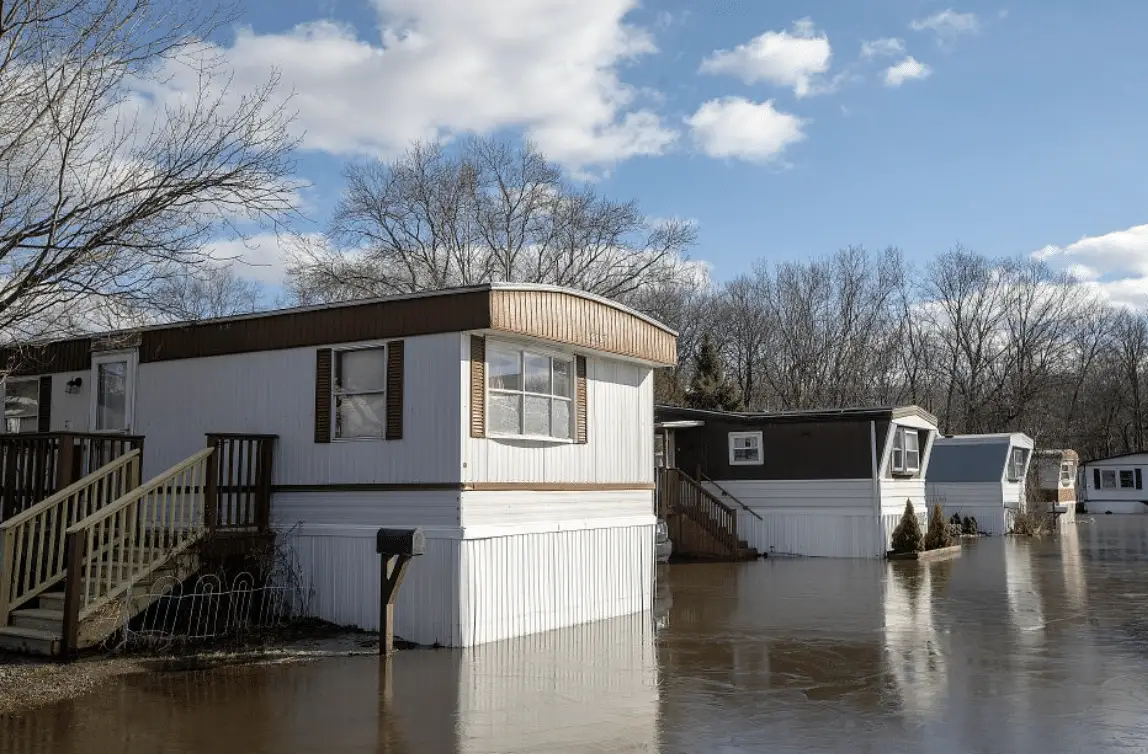
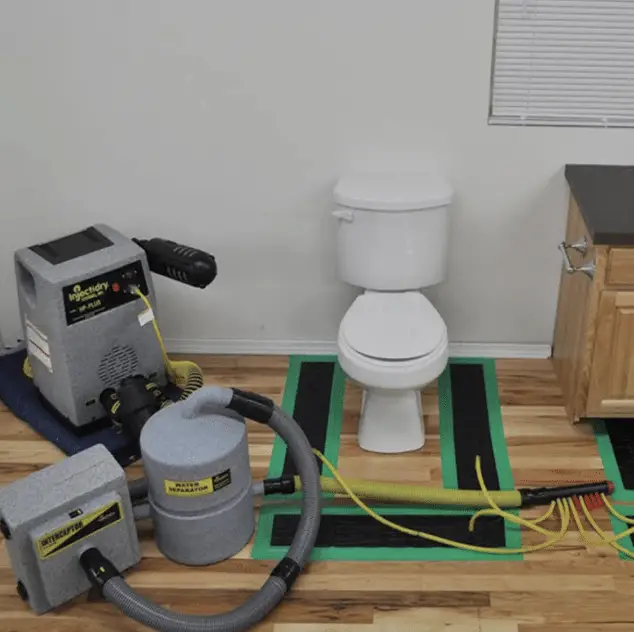
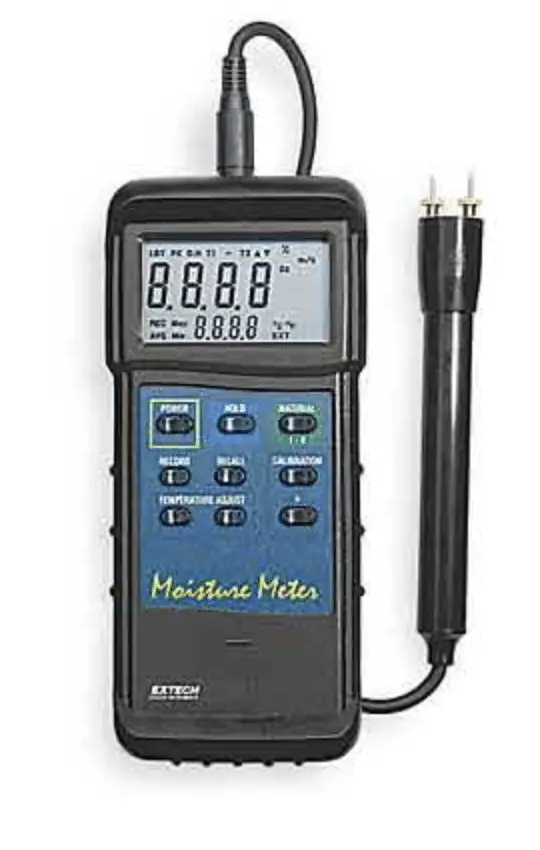
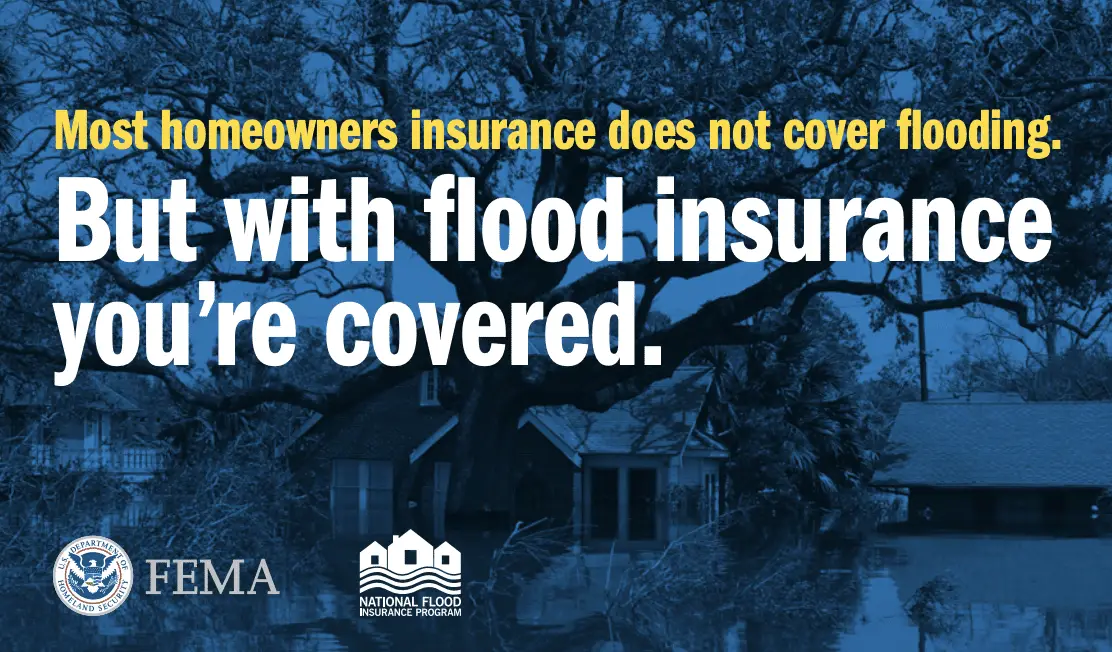
Thank you for sharing these useful tips mentioned here. I got all the resources I needed. It saves money on utilities and reduces your impact on the environment.
thank you very much for this article, really appreciate it.